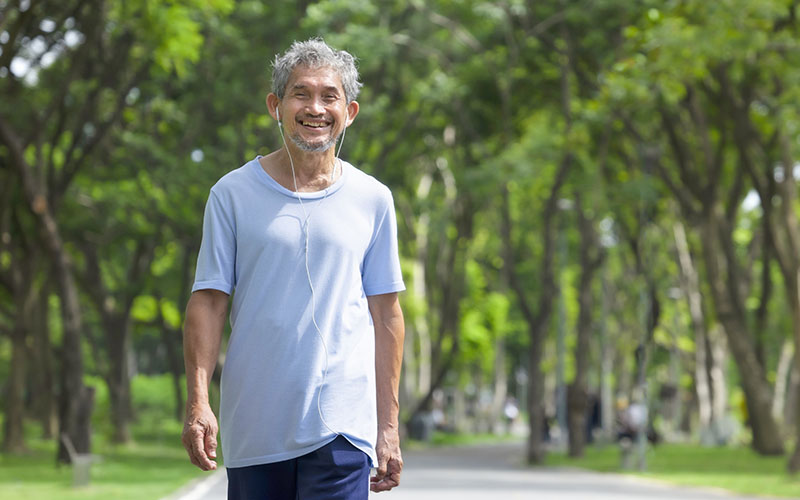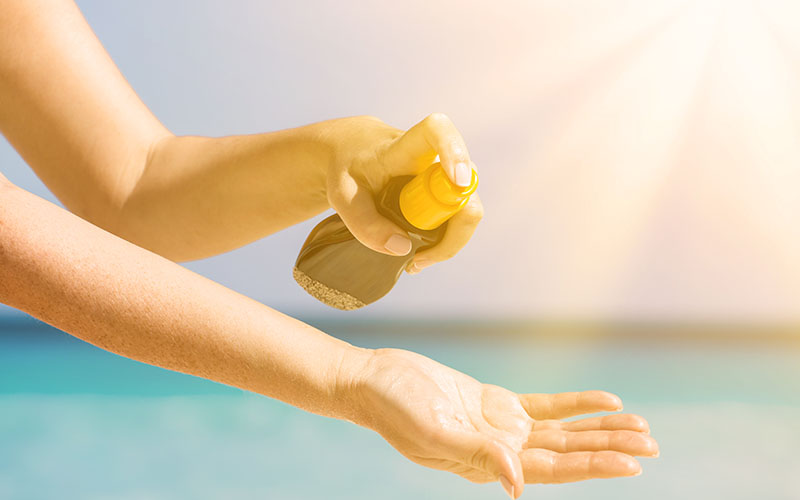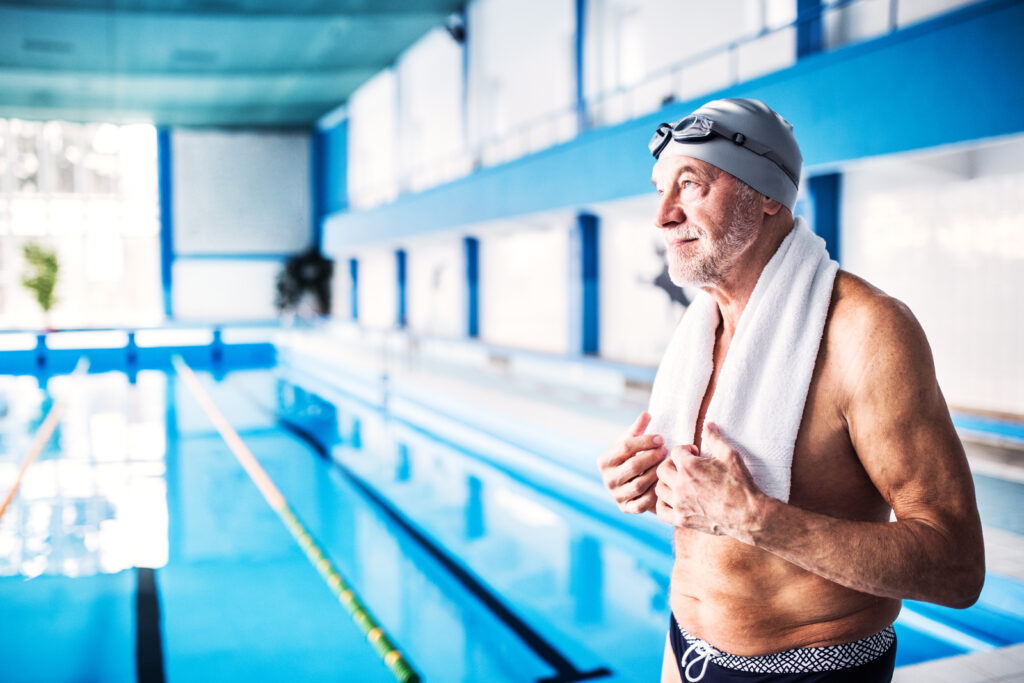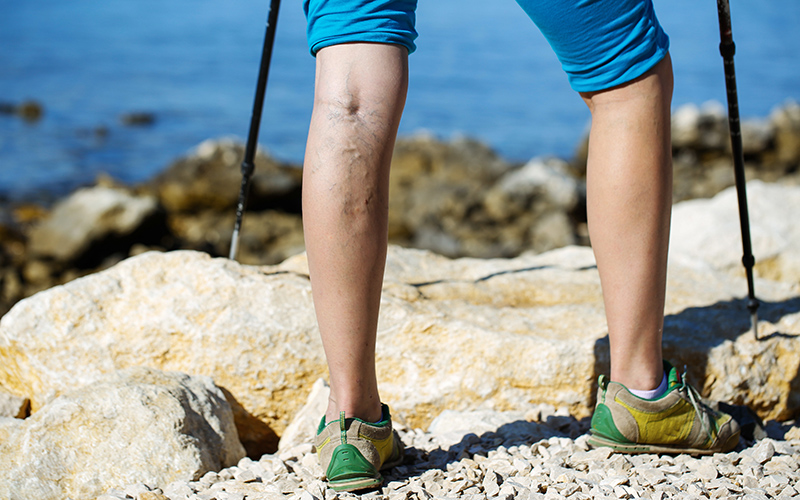
Summer in Washington state is a great time to get outdoors and enjoy the beautiful weather. But while the warmth is a nice break from the chilly, rainy months, it is important to be mindful of keeping your body hydrated and at a safe and comfortable temperature by making changes to your wardrobe and routine as needed. We asked staff and providers from around Valley for their tips to stay safe and cool.

Heat Stress
Augustus Wheelock, CHSP, Safety Manager
Heat stress is caused by environmental conditions that increase body temperature beyond our ability to stay cool.
Hospitalizations for heat-related illness in Washington state, not including work related incidents, range from 25 to 113 people each year; about 50% are people ages 65 and older. According to the Washington State Department of Health, heat stress incidents occur in May through September.
The Bureau of Labor Statics reported 43 deaths nationally in 2019 from work-related heat exposure.
Heat-related illness symptoms:
- Muscle cramps
- Irritability, confusion, dizziness
- Excessive sweating
- Hot, red, clammy or dry skin
- Increased heart rate
- High body temperature (103°F or higher)
- Thirst, nausea or vomiting
- Dizziness, nausea, confusion or you stop sweating
- Slurred speech and loss of consciousness
If you or someone you know experiences signs of heat exhaustion or heat stroke, seek medical care immediately.
Prevent and treat heat-related illness:
- Stay hydrated: Drink water every 15 minutes even if you are not thirsty and avoid caffeine and alcohol.
- Limit outdoor activities: If you must work outside, try to perform activities in the early morning or late evening and take frequent breaks.
- Shut out the heat: Keep blinds and curtains closed. If it cools at night, crack open a window.
- Create relief: Take a cold shower or use ice or cold compress packs and apply them to your forehead or the back of your neck.
- Acclimation: Acclimating to heat takes about two weeks of consistent exposure, limiting but not eliminating health risks.
- Keep cool: Cooling center locations can be found throughout King County. City websites and social media pages, as well as websites like King County Regional Homelessness Authority post information about cooling shelters as they open.
For more tips on how to stay cool, check out King County’s Hot Weather Preparedness Guide.

Medication Storage
Kamaldeep Sandhu, PharmD, BCPS, Pharmacy Support Systems
- Talk to your healthcare provider or a pharmacist at your local pharmacy about the medications you are taking and any precautions you should take during days with higher temperatures.
- Some medications can have some side effects or increased side effects, such as increased sensitivity to heat, sweating, dehydration, and other heat-related illnesses, when taken during extreme heat.
- It is recommended to store medications in a cool, dry place in your home, preferably not in a kitchen or bathroom so they are away from moisture.

Heat and Your Heart
Rajib Choudhury, MD, Cardiology Clinic
All patients with heart disease should be careful, especially those with congestive heart failure, hypertrophic cardiomyopathy, hypertension or a history of syncope. Remember, everyone’s situation is unique, so it is crucial to speak with your healthcare provider on managing heat-related risks for your heart condition.
- Stay hydrated: Dehydration can strain your heart, so it is important to drink plenty of water throughout the day. Avoid drinks that are sugary or caffeinated, as they can contribute to dehydration.
- Stay cool: If you don’t have air conditioning at home, consider visiting cool places such as shopping malls, libraries or community centers, or using fans to circulate air.
- Dress appropriately: Wear lightweight, loose-fitting clothing in light colors and breathable fabrics like cotton that allow air to move around your body and help with sweat evaporation.
- Plan outdoor activities wisely: Try to schedule outdoor activities during cooler parts of the day, such as early morning or late evening. Take frequent breaks in the shade or cool areas and avoid long exposure to direct sunlight.
- Be mindful of medication: Some medication for heart disease can affect your body’s response to heat. Talk to your healthcare provider to understand if any of your medications could increase your vulnerability to heat-related illness.
- Monitor your symptoms: Pay close attention to any signs of heat exhaustion or heat stroke, such as dizziness, rapid heartbeat, nausea, confusion, or headache. If you experience any of these symptoms, seek medical attention immediately.

Outdoor Exercise
Kemuel Santana, Exercise Specialist, Lifestyle Medicine
Ready to move from the gym to the outdoors? Try these fun activities for your next workout.
- Swimming: Pool or lake swimming gives you a full-body workout, providing resistance for your muscles while helping you stay cool in the hot weather.
- Hiking: Connect with nature while getting a good cardio workout.
- Kayaking or paddle boarding: Engage your core and your upper body muscles.
- Cycling: A low impact activity that’s also a great cardio workout you can enjoy individually or with friends and family.
- Outdoor circuit training: Set up a circuit in your backyard, garage gym or local park using body weight exercises like squats, lunges, push-ups, and jumping jacks. To work in cardio, add in exercises like jumping rope, a brisk walk or a run.
Looking for a place to get outdoors near home or work? Check out this article on area parks and trails.
How to exercise safely outside:
- Stay hydrated: Drink plenty of water before, during and after exercising. Drink 80-100 ounces of water a day. In addition to water, electrolyte-supplemented beverages can help replenish electrolytes lost during exercising/sweating.
- Dress appropriately: Wear lightweight, loose-fitting, breathable clothing, and choose lighter colors that reflect sunlight rather than absorbing it.
- Protect your skin: Apply sunscreen with sufficient SPF to protect your skin from harmful UV rays.
- Find shade or cool areas: When possible, find shaded areas or places with a breeze to keep your body temperature lower and reduce the risk of overheating.
- Stay up to date with forecasts: Check the weather and stay informed about any heat advisories in your area. If conditions are too hot, it’s best to avoid outdoor exercise and choose indoor alternatives in a cool location.
- Use cooling aids: Placing cold towels around your neck and/or forehead, ice packs and cool water on your head and face during exercise can help regulate your body temperature.
- Listen to your body and know the warning signs: Familiarize yourself with the signs of heat exhaustion and heatstroke. Symptoms of heat exhaustion include heavy sweating, weakness, dizziness, headache, and nausea. Heat stroke is a more severe condition and may involve high body temperature, confusion, rapid heartbeat, and unconsciousness. If you experience these symptoms, seek medical attention immediately.

Heat and Rheumatology Conditions
Amrit Sandhu, MD, Rheumatology Clinic
Many people with arthritis, including rheumatoid arthritis, psoriatic arthritis, systemic lupus erythematosus (SLE), scleroderma, and mixed connective tissue disease (MCTD), tend to feel better in warmer weather. They often experience less stiffness during the summer. However, people with Sjogren syndrome, which causes chronic dry eyes and dry mouth, may feel even drier in hot temperatures.
People with SLE have a higher risk of flare-ups during the summer, but it’s not directly due to the heat. Sun exposure is the main trigger for disease flare-ups in these patients. We always advise our lupus patients to protect themselves by using sunscreen and avoiding prolonged sun exposure.
People with gout arthritis or chronic tophaceous gout also face a higher risk of gout flare-ups in hot weather, that can be caused by dehydration.
I am particularly concerned about patients who have limited mobility during hot weather. They are at a higher risk of dehydration, which can worsen their other medical conditions. It’s important for them to take extra precautions and stay hydrated.
To manage these conditions during the summer, we generally recommend the following:
- Avoid prolonged sun exposure
- Stay well hydrated by drinking plenty of water
- Always wear sunscreen when going outside
- Avoid excessive alcohol consumption

Heat May Temporarily Worsen Symptoms for People with Multiple Sclerosis
Sargon Bet-Shlimon, MD, Neuroscience Institute
People with multiple sclerosis often experience a temporary worsening of their neurologic symptoms when exposed to heat, such as in hot weather conditions. This relates to the nervous system’s impaired ability to send electrical signals when exposed to heat, especially if there is already damage to the nerves, as there is in MS. It is important to note that the worsening symptoms related to heat exposure are temporary and are not dangerous – heat does not cause more MS disease activity or damage to nerve cells, and symptoms should get better after cooling off.
As we enter the warmer months of summer, here are a few strategies to beat the heat, taken from the National Multiple Sclerosis Society website:
- Stay in an air-conditioned space during periods of extreme heat and humidity. If an air conditioner is needed to help minimize symptoms, the cost of this equipment may be tax deductible if your healthcare provider has written a prescription for it.
- Use cooling products such as vests, neck wraps, and bandana during exercise or outdoor activity.
- Wear lightweight, loose, breathable clothing. Drink cold fluids and eat popsicles.
- Exercise in a cool pool (less than 85 degrees Fahrenheit) or a cool environment. If you are exercising outside, pick cooler times of the day, usually early morning or evening.
- Try pre- and post-cooling to decrease the heating effects of exercise. Get into a bathtub of lukewarm water and continue adding cooler water over a period of 20 to 30 minutes. A cool bath or shower can also help reduce core body temperature following activity or exposure to a hot environment.

Heat and Varicose Veins
Jack McCallum, MD, Vascular Surgery Clinic
Varicose veins are often more visible when it is hot out, as veins tend to dilate, or to expand, when it’s warm. Swelling from venous insufficiency can also happen. If you have been prescribed compression stockings for your condition, continue to wear them as directed, even in the summer months. These stockings can help improve circulation and reduce swelling in your legs.
In general, walking is good for all vascular conditions–so I recommend patients take advantage of the warmer months to get outside and walk and be healthy. Walking or other low-impact activities promote blood circulation and help prevent blood clots. However, avoid extreme exertion in very hot weather to prevent overheating.

